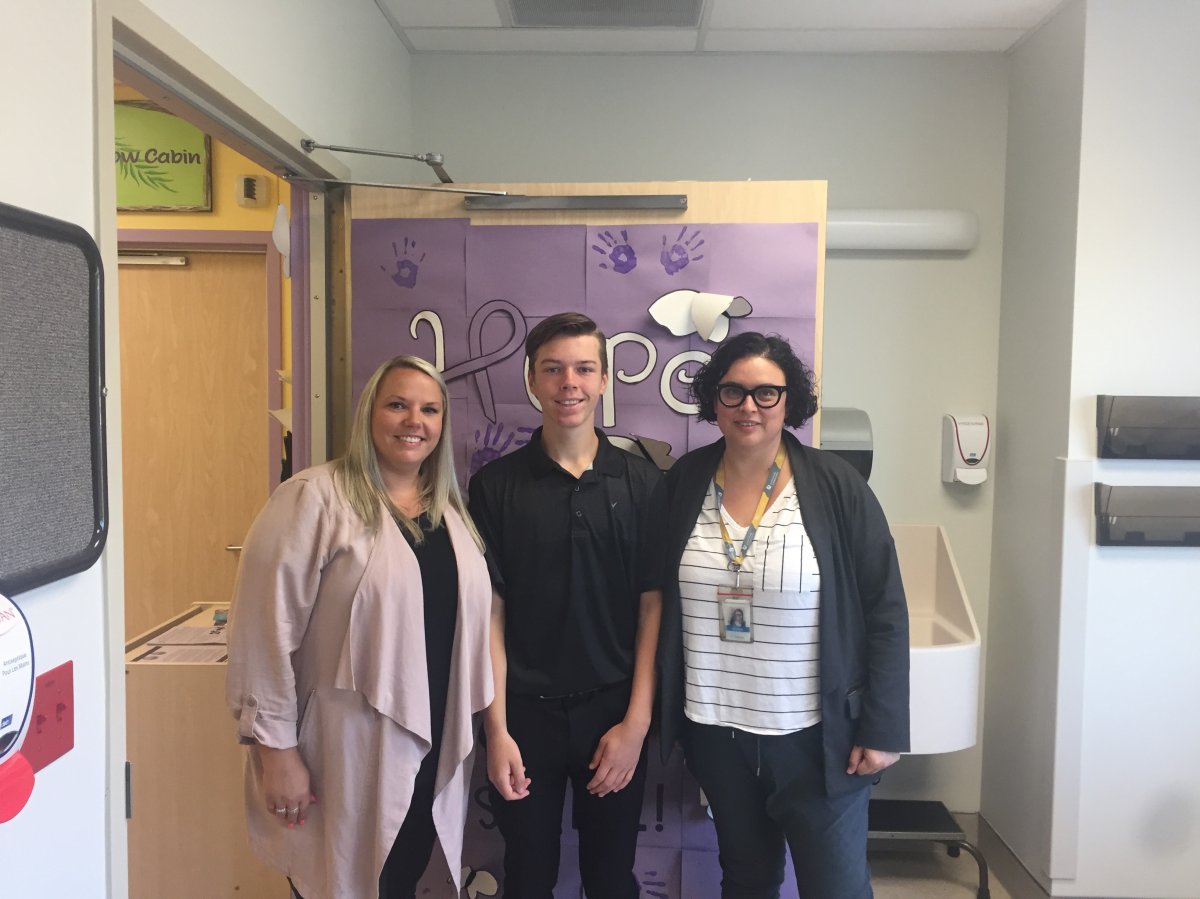A London teenager has been seizure-free since October after undergoing the province’s first paediatric robot-assisted stereoelectroencephalography (SEEG) procedure at the London Health Sciences Centre (LHSC).

The procedure identifies the part of the brain where epileptic seizures originate in preparation for possible surgery.
“His recovery time was so short. It was crazy to see him up within the first day,” said Ethan’s mother, Anita, who did not want to use her last name to protect their privacy, during an appearance on London Live with Mike Stubbs on 980 CFPL.
“And now with being seizure-free, it’s utopia. We were striving for that, we were hopeful, but it’s actually a miracle that it happened. We’re so lucky.”
Anita’s son Ethan first started having seizures when he was nine. Treatment began with non-surgical methods, including multiple anticonvulsant medications, but the seizure activity continued and escalated over time.

Get weekly health news
Eventually, Dr. Andrea Andrade, a paediatric neurologist and the medical director of the Paediatric Epilepsy Program at the Children’s Hospital at LHSC, suggested Ethan would be a good candidate for surgery.
Anita told 980 CFPL she trusted Andrade completely, which aided in their decision to go ahead with the robotic SEEG procedure.
“We just looked at her and said, ‘Do you honestly and truly believe it?’ And she said, ‘Of course I do or I wouldn’t have proposed it.’ You’ve got to weigh the pros and cons,” Anita said. “It’s the first, it’s never guaranteed regardless of whether they have data or not, but it comes down to the trust.
“We trust her, we trust her team, and we went for it.”
The SEEG procedure, Andrade said in a release, is normally an eight- to 10-hour surgery, but the robotics technology allows for it to be completed in roughly two hours. As a result, “not only are the risks associated with the use of general anesthetic minimized, the diagnostic outcomes are also improved as a result of extremely precise electrode placement.”
The October 4, 2018 SEEG procedure involved placing electrodes “deep into the brain to map epileptic seizure activity” to determine what part of the brain the activity is coming from and whether a good outcome is possible through brain surgery.
The results from the SEEG procedure allowed medical staff to determine that Ethan was a candidate for brain surgery to reduce or potentially eliminate seizure activity. That surgery was conducted on October 22, 2018.
Since then, Ethan has been seizure-free.
In addition to performing the first paediatric robotically performed SEEG procedure, LHSC also was the first to perform the surgery with robotic assistance on adult patients.











Comments